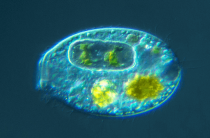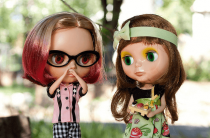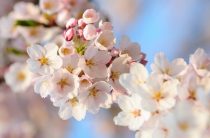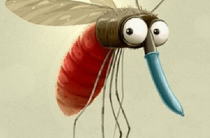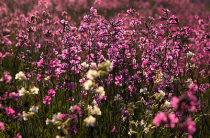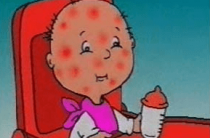Pollen allergy is a type of seasonal allergy in which the allergic reaction is caused by inhalation of plant pollen.
The body of a person prone to allergic reactions reacts to special proteins present in the composition of male inflorescences by the appearance of an allergic reaction. As a result of a malfunction in the immune system, the body of an allergic person perceives the ingress of pollen allergens as a potential threat. This causes all kinds of allergic reactions.
How does an allergy to flowering manifest itself?
Firstly, it is worth noting that an allergy to flowering is a seasonal phenomenon. From this it follows that the patient experiences manifestations of allergies only during the flowering period of the plant. In general, plants bloom for several weeks (from 2 to 5) per year. However, in some cases, the patient may be allergic to the flowering of several plants, which causes significant inconvenience to the patient.
Many allergy symptoms can contribute to a significant deterioration in the patient's well-being during the flowering period and disrupt the usual course of life.
Allergy to flowering has a characteristic manifestation. It is included in the class of respiratory allergies, that is, allergies in which the reaction unfolds after the active substance enters through the respiratory tract. Its specificity is manifested by the fact that the symptoms of this type of allergy are mainly respiratory:
- Nasal congestion;
- Isolation of mucous secretion through the nose;
- Sneezing and allergic cough;
- Swelling of the larynx;
- Difficulty breathing;
- Eye redness and increased tearing
Also, with an allergy to pollen, dermatological manifestations can also occur, during which a patient develops rashes on the skin, different in shape and nature, with localization both in separate (sometimes a small area) places, and throughout the body, with acute dermatic forms. .
Another common symptomatic phenomenon is the presence of symptoms similar to ARVI conditions. Thus, a patient who experiences a manifestation of an allergy to plant pollen for the first time notices an increase in temperature, fever and aching joints. Often all this is combined with respiratory manifestations, such as: sneezing, nasal congestion and runny nose. For this reason, the symptoms of allergies and acute respiratory viral infections are often confused.
Bronchial asthma
Inhalation of an allergen contained in pollen often causes asthmatic symptoms in a patient. Symptoms of bronchial asthma with allergies are expressed in difficulty breathing, which is caused by vasoconstriction in the bronchi, hoarse breathing, a feeling of pressure in the chest, shortness of breath and coughing.
Before the onset of asthmatic suffocation, such phenomena as: sharp attacks of coughing or sneezing, the sudden appearance of an allergic rash, which is quickly reversible, can be observed.
Anaphylactic shock and angioedema
These are some of the most severe manifestations of allergies that require urgent treatment, as they are potentially dangerous for the development of complications that are directly life-threatening.
Causes of an allergy to flowering
Actually, the reasons why some people are allergic to flowering plants, while others are not, are completely unknown. It is logical to assume that the ecology plays an important role in this, which has noticeably deteriorated due to the development of industry. At least, this argument is supported by the pronounced dynamics of the growth of this disease over the past century.
Plants that cause an allergy to flowering:
An allergy can occur to the pollen of absolutely any plant. However, there are the most common allergen plants, which are the most common provocateurs of allergic reactions. Flowering plants occur from spring to autumn. When allergic to pollen, the following most dangerous periods are distinguished:
- Trees bloom in spring (alder, hazel, birch, oak, hornbeam). This period begins in March and ends in May.
- In summer, herbs and flowers bloom in the meadow.
- In autumn (September - early October), various weeds bloom.
Definition of pollen allergy
If you feel the development of allergy symptoms at the onset of flowering plants, you need to see an allergist. The diagnosis is made after the complaints of the patient himself are taken into account and the appropriate tests are carried out.
The most common and productive diagnostic method for this type of allergy are the so-called "scarification tests".
This event involves the application of special shallow incisions on the skin through which the test allergen is introduced. If a person is allergic to this substance, it will manifest itself within a few days. An allergic reaction is expressed in the formation of dermatological manifestations on the surface of the skin exposed to contact with the allergen.
Also, in order to diagnose the general state of health of the patient, blood and urine tests are carried out, the results of which are also taken into account when making a diagnosis.
Pollen Allergy Treatment
Before talking about the treatment of this disease, it should be noted that, as is typical for all allergic phenomena, there is no therapeutic method that could eliminate the cause of this phenomenon. Perhaps the situation will change for the better when medical science takes a step forward and finally it becomes possible not symptomatic, but a complete cure for allergic diseases.
The most productive and safe method of treating allergic diseases of any genesis is the so-called barrier therapy. This means that the patient should distance himself as much as possible from the source of the disease. If you suffer from an allergy to the flowering of a certain plant, then during the period of activity of the pollen of this plant, it is necessary to move to climatic zones for which the growth of this plant is not typical.
Alas, this is not always possible. Therefore, in this case, the task of the patient is not complete. but at least the maximum protection from the source of an allergic reaction. To do this, it is necessary to do wet cleaning of the premises as often as possible, install nets on windows that have minimal gaps, and refrain from morning and afternoon walks. The use of special respirators will also come in handy, as it will protect against a significant amount of allergenic material.
Immunotherapy for allergic diseases
This method involves the use of constant contact of the patient with a substance - an allergen. Allergens are introduced in minimal amounts, and contact continues for several months. As a result of this therapy, the patient's body loses its sensitivity to allergy pathogens for some time.
Use of symptomatic therapy:
The use of histamine blockers, as well as corticosteroids, is part of the common practice in the treatment of symptoms of allergic manifestations. Despite the fact that allergic manifestations occur as a result of interaction with various substances, nevertheless, further development occurs according to a mechanism common to any allergy.
In the treatment of allergy to plant pollen, a significant number of drugs are used to combat asthmatic manifestations, as well as topical drugs (sprays, ointments, eye drops).
Risk group for pollen allergy:
- Persons living in ecologically unfavorable areas;
- Children who did not receive breastfeeding at an early age;
- Children who had allergies in their family;
- People suffering from stress disorders
Prevention of pollen allergy
- During the flowering of the allergen plant, it is not recommended to walk in park areas, forests, plantings or meadows;
- Follow a special hypoallergenic diet that excludes foods that increase the course of allergies before, during and after the flowering of the allergenic plant
- After you have returned from the street, with clean hands, wash your face with warm water, using detergents;
- Do not drink alcohol and nicotine during the flowering of the allergenic plant;
- Remember that the greatest danger for you is the morning and afternoon, as well as dry and windy weather;
- During the period when your allergen does not bloom, strengthen your immune system with moderate physical activity, hardening with cold water and the correct use of vitamin and mineral complexes.
- During the flowering period of the allergen, do not dry things in the open air;
- Wet cleaning of the premises should be carried out at least once a day. Pay special attention to cleaning windows, window sills, change tulle and curtains more often.
- During periods of exacerbation, change clothes more often after going out;
- Use special devices to purify the air. If you suffer from asthmatic manifestations, then you need to acquire special devices to maintain optimal air humidity.
- Carefully follow the schedule of taking drugs, if their use is indicated for your condition;
- Using moistened gauze hung on windows will help you trap more pollen on its surface;
- Pay close attention to how you feel and contact your doctor immediately if you notice an increase in the intensity of symptoms or the appearance of new symptoms.
We draw your attention to the fact that only a competent specialist should deal with the treatment of allergies, as well as the diagnosis. Self-medication is potentially dangerous for your health. Given that allergies can cause dangerous complications, they can also pose an immediate threat to life.
